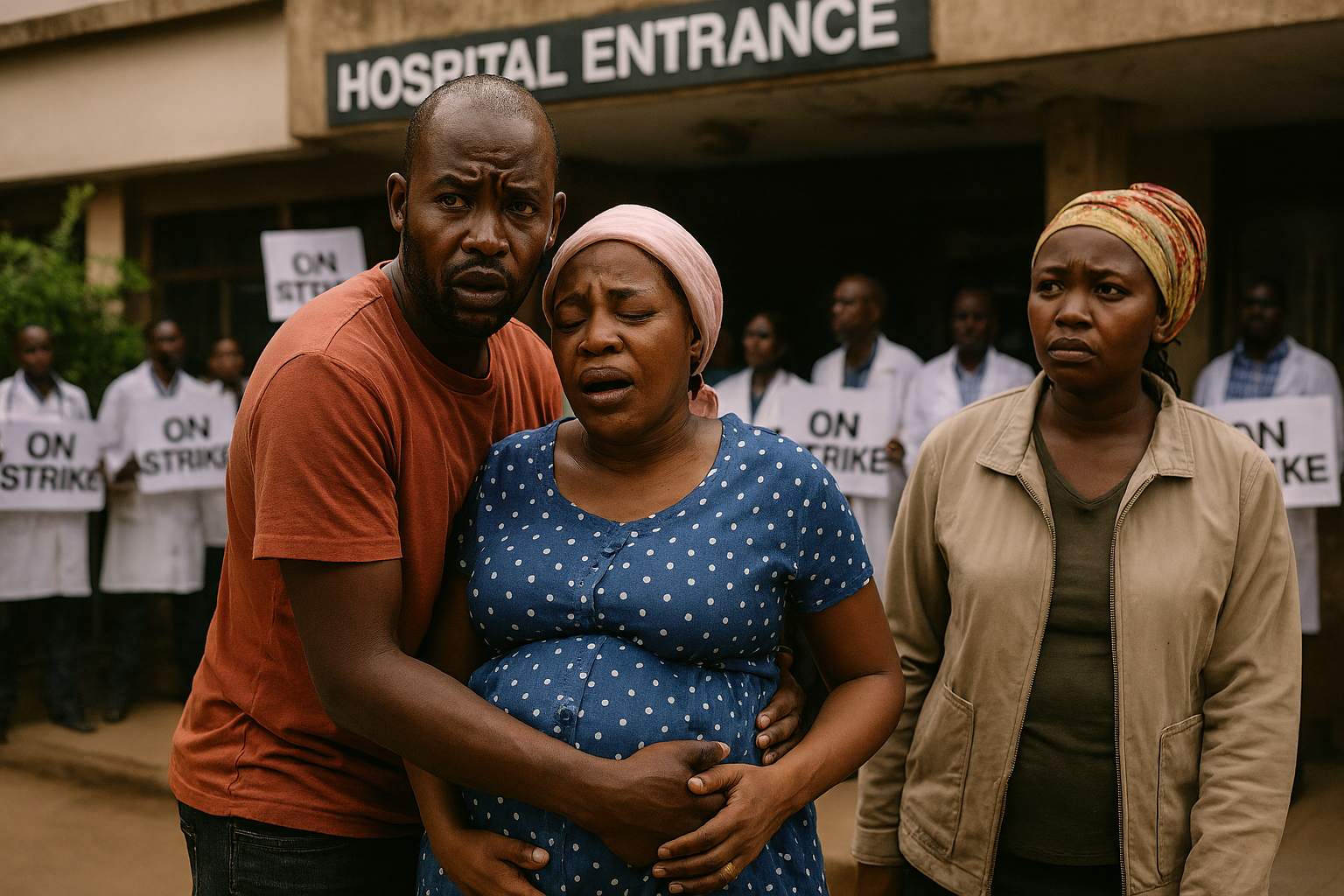 The AI photo captures the human toll of Kenya’s healthcare crisis outside a hospital./AI ILLUSTRATION
The AI photo captures the human toll of Kenya’s healthcare crisis outside a hospital./AI ILLUSTRATION
When Stephen Alumasa rushed his expectant wife to Mbagathi Hospital in Nairobi, he expected urgent care. Instead, he was turned away. Health workers were on strike.
“My wife was bleeding, and I had to bring her here for attention. They told me to go back because they were not working. I rushed her to a private facility where the bill is already too high. I don’t know what to do,” he said.
Outside the same facility stood Elizabeth Omollo, also seeking treatment for complications. She too was turned away. Workers at Mbagathi say they have not been paid for two months. By the time of publishing, the matter had not been resolved.
The crisis is not unique to Nairobi. In Kiambu County, a two-month doctors’ strike resulted in 164 newborn deaths and 14 maternal deaths, according to data tabled in Parliament by Health Cabinet Secretary Aden Duale.
The strike forced Kenyatta National Hospital to operate beyond capacity, with CEO Richard Lesiyampe admitting that the labour ward and newborn unit were handling “more than twice” what they are designed for.
As hospitals struggle, Kenya’s public wage bill continues to rise. The country now spends about Sh960 billion per year—around Sh80 billion every month—on salaries. This is a 20.3 percent increase since 2022 and is widely viewed as unsustainable.
Treasury Cabinet Secretary John Mbadi told Parliament: “Up to January 2025, we were paying Sh75 billion per month. Today it has risen to Sh80 billion. This level is not sustainable. We will end up crowding out capital expenditure.”
In 2013, only 16 percent of Kenya’s ordinary revenue went to salaries. Today, the figure has exceeded 40 percent, reducing resources for development spending, including critical health needs.
Peterson Wachira, national chairperson of the Kenya Union of Clinical Officers (KUCO), says the health sector is facing a “severe, multi-layered crisis” — from chronic understaffing to lack of essential drugs.
He cited a recent report on Kenya’s preparedness for Universal Health Coverage, which pointed to major gaps in staffing, facility accreditation, infrastructure, and health information systems.
“One of the issues mentioned is the staffing gap, yet counties are being pushed to reduce wage bills to below 35% as required by law. How do you reconcile the two?” he asked.
Wachira said staffing targets “do not speak to Kenya’s realities”, noting that limited budgets have stalled recruitment. Kenya committed to hiring 12,000 health workers annually under a 2012–2030 plan, reaffirmed in 2022, but the target “remains far from being achieved.”
He also raised concern about drug shortages. “Some counties have not procured from KEMSA for the last six months. That’s why when you come to public hospitals with emergencies, we send you to buy drugs outside,” he said.
He added that delays by the Social Health Authority (SHA) in reimbursing facilities—since funds are sent to counties rather than hospitals — have worsened shortages.
Health policy expert James Kamau said delayed payments owed by the state to pharmaceutical suppliers have contributed to persistent stock-outs.
“Facilities like Mbagathi and Mama Lucy should have medicines, not just ARVs, malaria and TB drugs. Even basic medicines for opportunistic infections are missing,” he said.
Kenya’s investment in healthcare remains far below international commitments. Under the 2001 Abuja Declaration, African states pledged to allocate 15 percent of national budgets to health. Only Rwanda, Botswana and Cape Verde consistently meet the target.
More than 30 AU member states allocate below 10 percent, with some at just 5–7 percent, according to Africa CDC.
This underfunding comes as public health emergencies rise sharply—a 41 per cent increase from 152 outbreaks in 2022 to 213 in 2024—stretching an already fragile health system.
















![[PHOTOS] Betty Bayo laid to rest in Kiambu](/_next/image?url=https%3A%2F%2Fcdn.radioafrica.digital%2Fimage%2F2025%2F11%2F3b166e2e-d964-4503-8096-6b954dee1bd0.jpg&w=3840&q=100)
